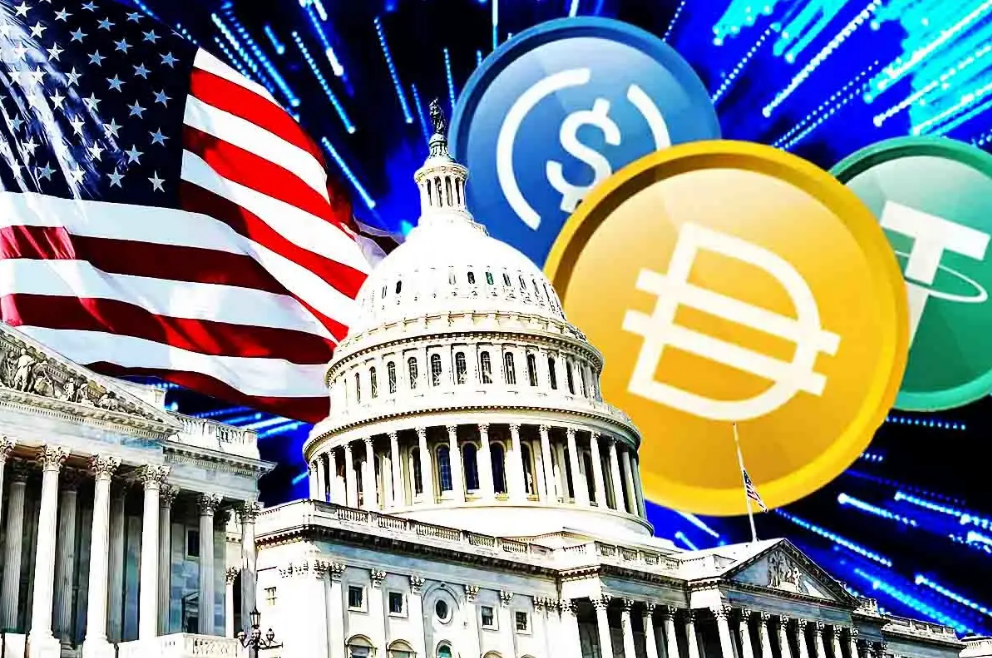This article was inspired by a recent post by @badbitch
With the recent passing of "The Anti-CBDC Surveillance State Act" and "The GENIUS Act", some questions are starting to arise:
- Will these government-sanctioned stablecoins be issued on private ledgers, or public blockchains?
- Will user account balances be visible to the public?
- Will transfers between self-custody wallets be permissionless?
In this article, we discuss the original purpose behind stablecoins, how they differ from the concept of a CBDC, and why the stablecoins enabled by the GENIUS Act could be used to "save" the population from rising inflation.

The Original Stablecoins
Why do we need stablecoins in the first place?
Not only are cryptocurrencies like Bitcoin and Ethereum extremely volatile in fiat terms, but sending dollars between traditional bank accounts often involves some kind of friction. For those reasons, the idea of a stablecoin (dollar-pegged digital token) has become popular in recent years.
How are stablecoins different from regular dollars held in a traditional bank account?
Unlike a traditional bank account, anyone with a cheap smartphone can generate a blockchain wallet (on Ethereum, TRON, or Solana, for example) and start receiving stablecoins without going through KYC (know-your-customer) or AML (anti-money laundering) protocols.
The recipient can then send those stablecoins nearly instantaneously to any other non-KYC'd wallet worldwide, without requesting permission from anyone to do so. Therefore, not only do stablecoins protect people from market volatility, they also enable frictionless global payments.
The original stablecoins operate on a transparent blockchain like Ethereum or Solana, where all account balances are visible to the public.
The idea of these original stablecoins differs from a Central Bank Digital Currency (CBDC), or a centralized stablecoin enabled by the GENIUS Act.
CBDCs (Central Bank Digital Currencies)
Although the technical details have never been fully laid out, a CBDC is essentially a digital currency stored on a private ledger under the control of a central bank (The Fed, ECB, etc). This is similar to how fiat works today, but just consolidated into a single database, and with greater controls.
Some governments have touted CBDCs as being more "accessible, efficient, and financially inclusive", whereas critics point out they would allow governments to more easily freeze accounts, as well as limit or completely restrict certain purchases (think plane tickets, gasoline, or red meat, for example).
Now, with the passage of the Anti-CBDC Surveillance State Act, CBDCs have been outlawed in the United States. That said, with the passage of the GENIUS Act, banks and corporations are now authorized to issue their own centralized stablecoins, so long as they follow certain regulations.
GENIUS Act Stablecoins
In order to receive approval from the government, a GENIUS stablecoin must be backed by certain assets (dollar reserves or treasuries, for example), regularly audited, and ensure customers go through KYC and AML procedures.
This bring up an interesting question, though.
Will KYC'd wallets be able to send centralized stablecoins to non-KYC'd wallets? The details are still unclear, but this freedom to transact dollars anonymously (and friction free) is part of the reason why stablecoins such as Tether and DAI became so popular in the first place.
Stablecoin issuers could use certain functions (like Transfer Hooks on Solana, for example) to prevent a KYC'd wallet from sending tokens to a non-KYC'd wallet.
Also, traditional banks and corporations are unlikely to publish their clients' balances to an open ledger, so they may end up using a permissioned blockchain, or zero-knowledge proofs on public blockchains to protect their customers' privacy.
By requiring stablecoin issuers to use a private ledger or permissioned smart contract, and forcing customers to go through KYC/AML procedures, this would give the overarching governing body control similar to a CBDC, although slightly less centralized.
Stablecoins & The Debt Reset
As inflation continues to worsen across the US and debt spirals out of control, there is talk that Americans may eventually be corralled into a UBI (Universal Basic Income) that comes in the form of a CBDC, or perhaps now, a centralized stablecoin.
Could major banks use the GENIUS Act to convert their customers' bank deposits into centralized stablecoins instead of CBDCs? Or could they partner with the government to offer UBI to the populace in the form of a highly restrictive centralized stablecoin?
Permissionless Stablecoins
In order to protect yourself from account seizures and limits on purchases, you can opt instead for decentralized stablecoins such as DAI and HBD, which are far more censorship-resistant than their centralized counterparts.
In the long-run though, censorship-resistant tokens that power online and real-world economic activity - and can be used to pay for services directly - are more likely to be chosen by the people as money, instead of government-sanctioned stablecoins.
I think this new stablecoin legislation is just another example of the powers that be trying to fit cryptocurrency into traditional government-controlled finance, which is like trying to insert a square peg into a round hole, and won't last long-term.
Until next time...
If you learned something new from this article, be sure to check out my other posts on crypto and finance here on the Hive blockchain. You can also follow me on InLeo for more frequent updates.
Sources
Image of Capitol Hill with Stablecoins [1]
Posted Using INLEO